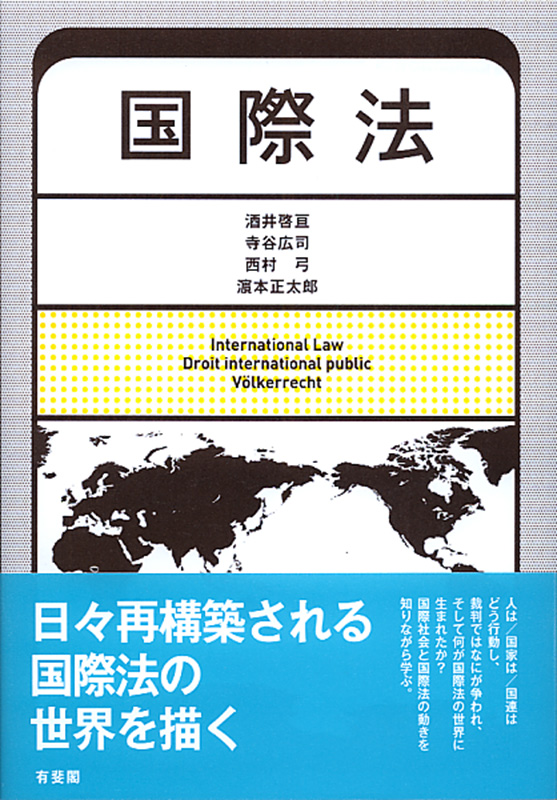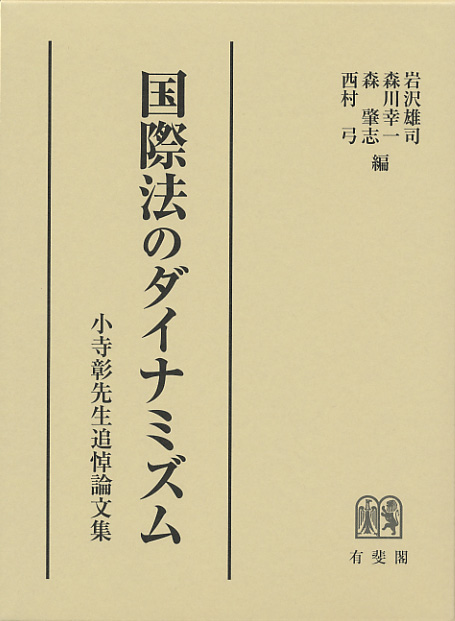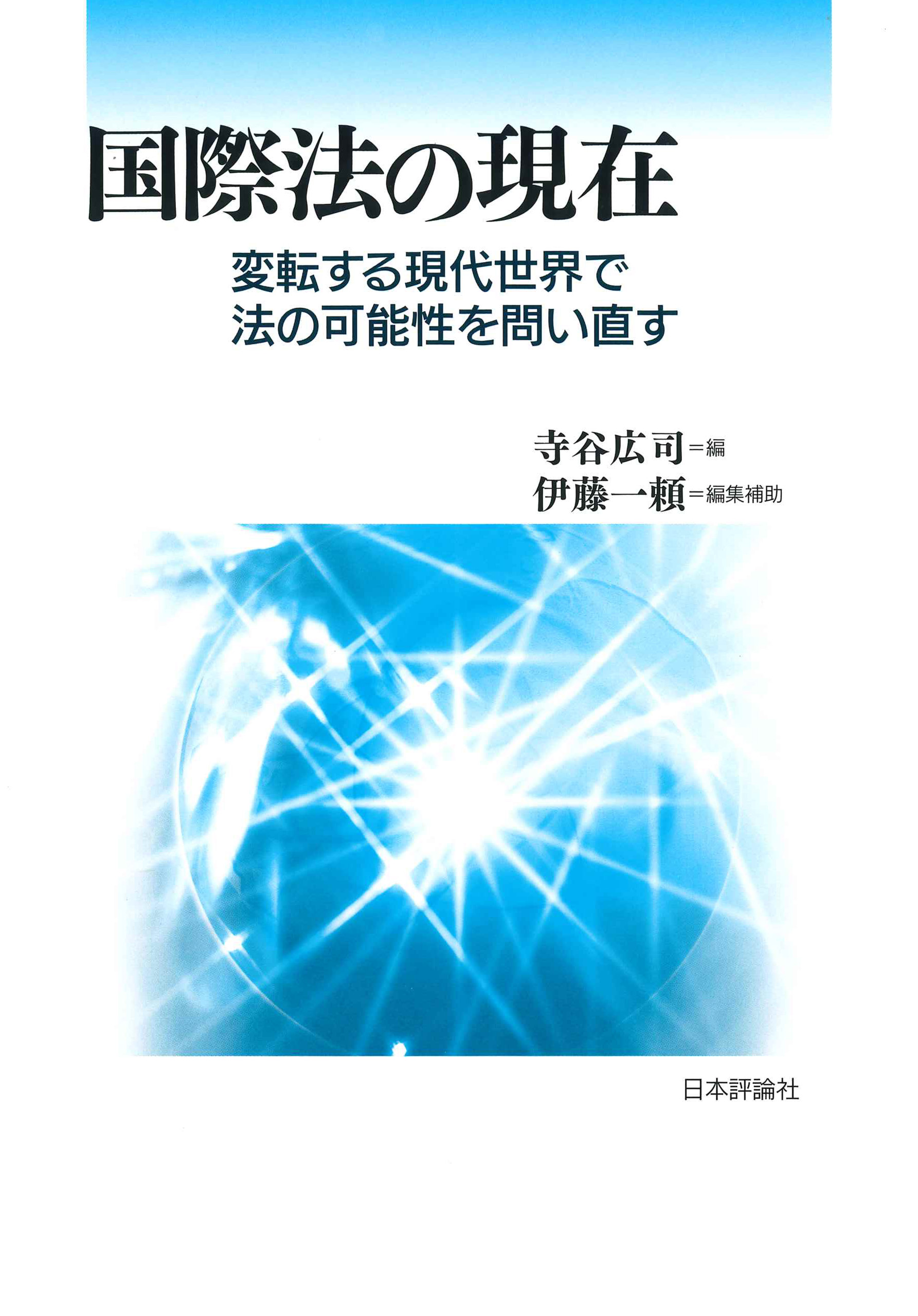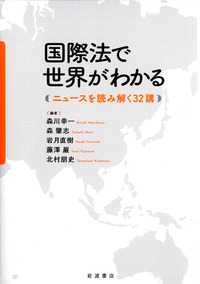
Title
Kokusaihō (International Law)
Size
834 pages, A5 format, softcover
Language
Japanese
Released
December, 2011
ISBN
978-4-641-04655-9
Published by
Yuhikaku Publishing
Book Info
See Book Availability at Library
Japanese Page
This publication is a textbook about international law. Numerous outstanding textbooks on international law have already been published. However, when I was approached about writing this book, I decided to go ahead with it for two reasons. First, each one of the co-authors is an interesting individual, and I thought that having a discussion with them would be an enjoyable experience. Second, although the current outlines and digests on this area all have their various merits, as I recall from my experience of reading them, they also have their limitations to some extent. Perhaps it is due to a lack of print space, but when covering the field’s laws and regulations, few of these publications discuss why these laws and regulations are valid or where a particular rule fits into the overall system of international law. So, with a need to remedy this in mind, we set to work on this publication, basing it on the manuscripts submitted by the four contributors and revising it through countless rounds of discussion. As I expected, the exchanges with the co-authors were stimulating and enjoyable. Yet, as the number of pages steadily increased, the publisher was kept waiting to publish for a long time. Perhaps this was due partly to our indolence, but also, when we started to cover the material for our second reason for writing this book, it took a great deal of discussion to forge a general consensus on our understanding of the system of international law and about the thinking behind its individual rules. While writing this book, we have been as conscientious as possible in our attempt to explain the logic and meaning underlying the legitimacy of specific laws and institutions and where these laws and institutions fit into international law as a whole. We must leave it to the reader to decide how successful our attempt has been.
There is a common misconception that the study of law is an arduous ordeal that demands memorizing colossal amounts of legal norms: the Statute Book in the case of domestic law and the texts of treaties in the case of international law. However, at a certain point, memorizing individual norms becomes almost completely pointless. Treaties are amended, and customary international law evolves. In the face of this ever-changing reality and of emerging circumstances, it is normally the case that existing norms cannot be applied unmodified, meaning that even carefully memorized regulations will not apply to the situation on the ground. Therefore, while we have written this book from the perspective that the law functions in the real world, we have given as many concrete examples as possible in our attempt to explain how international law works in today’s global society. It is unlikely that any example case, or its specific resolution, will apply unchanged to other cases. In the course of legal practice, certain questions must be addressed afresh. Why and on what grounds is a given norm legitimate? What is the intent of a given law or institution? I will be more than delighted as an author if, having contemplated these issues, the reader comes away from this publication with some sense that to learn how to balance various interests by reaching logical, consistent, and fair decisions is to learn law, even when dealing with unfamiliar, new situations.
(Written by NISHIMURA Yumi, Professor, Graduate School of Arts and Sciences / 2018)



 Find a book
Find a book






